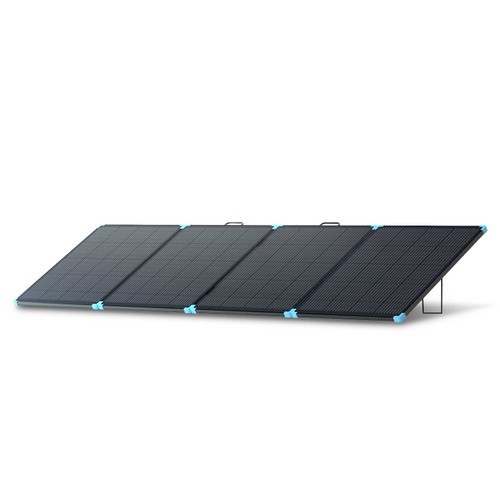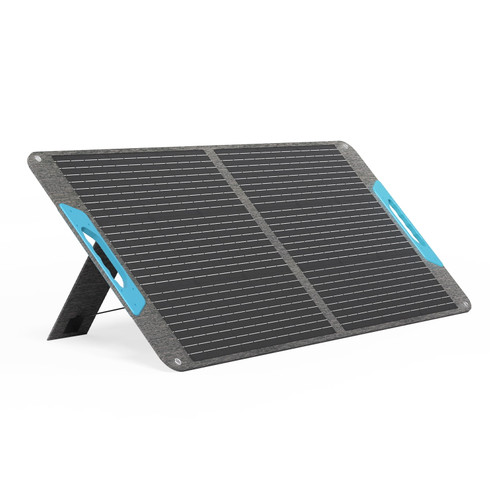


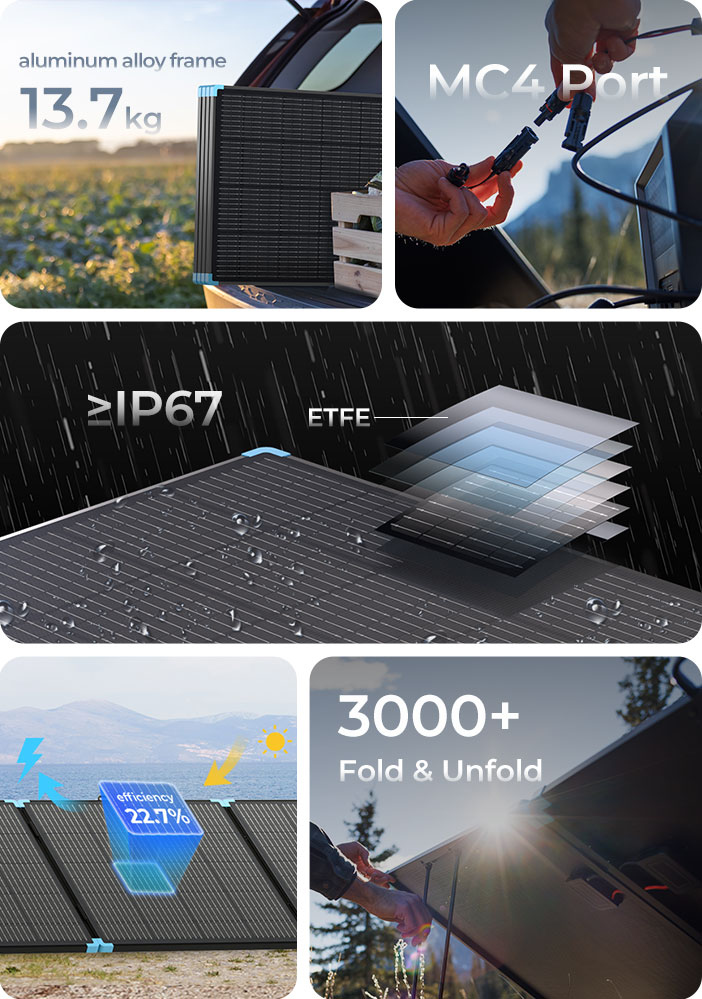


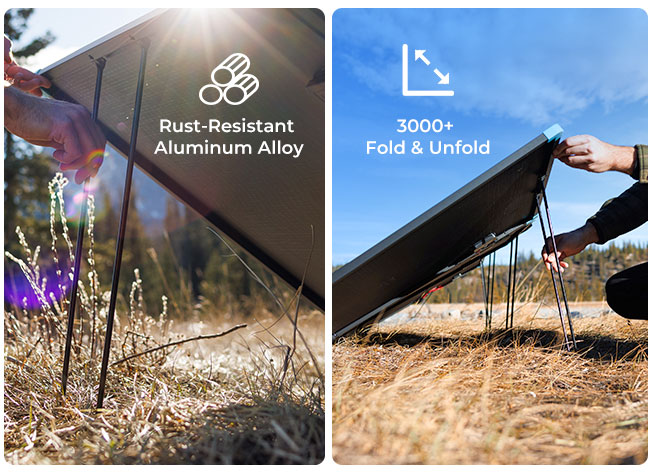
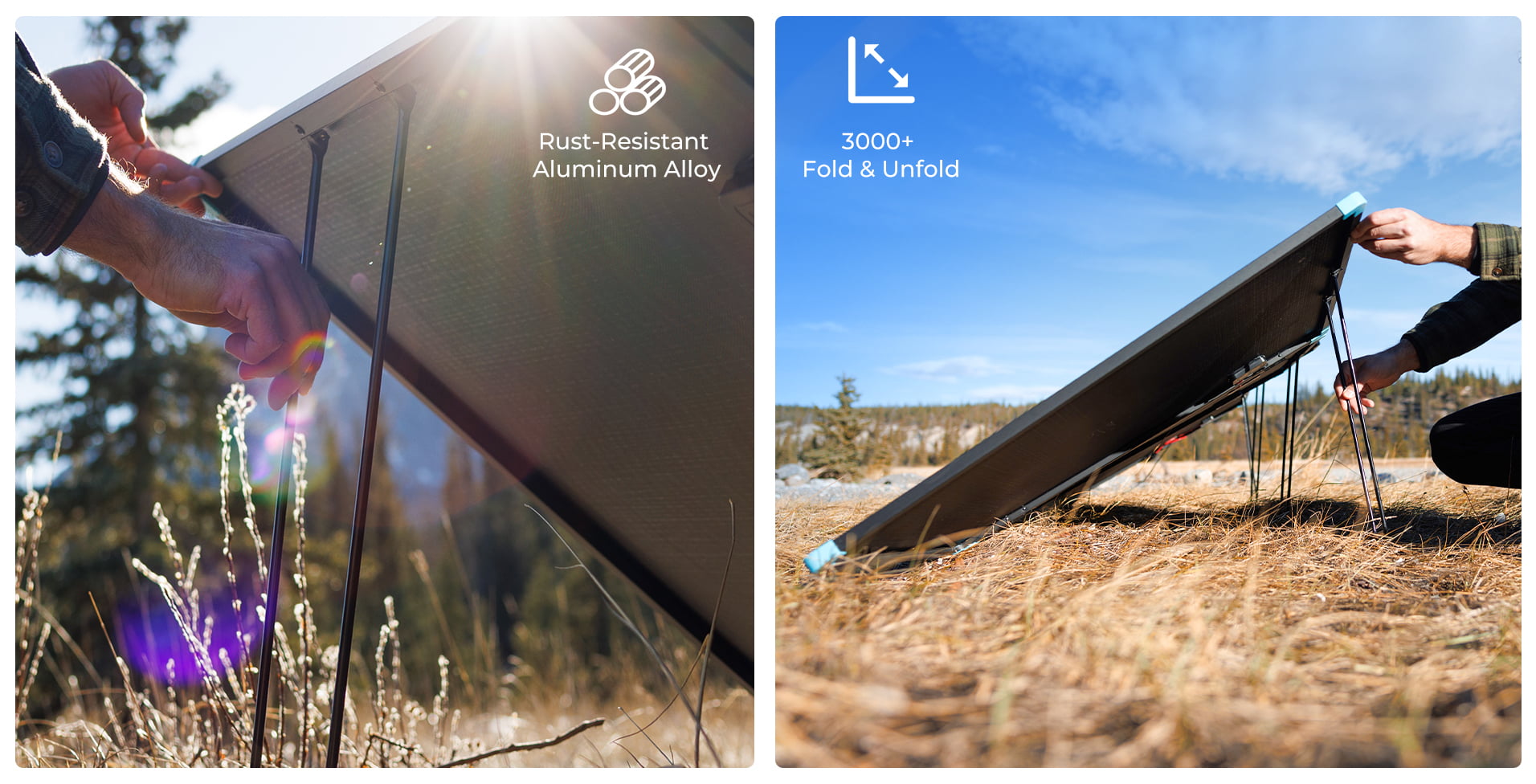
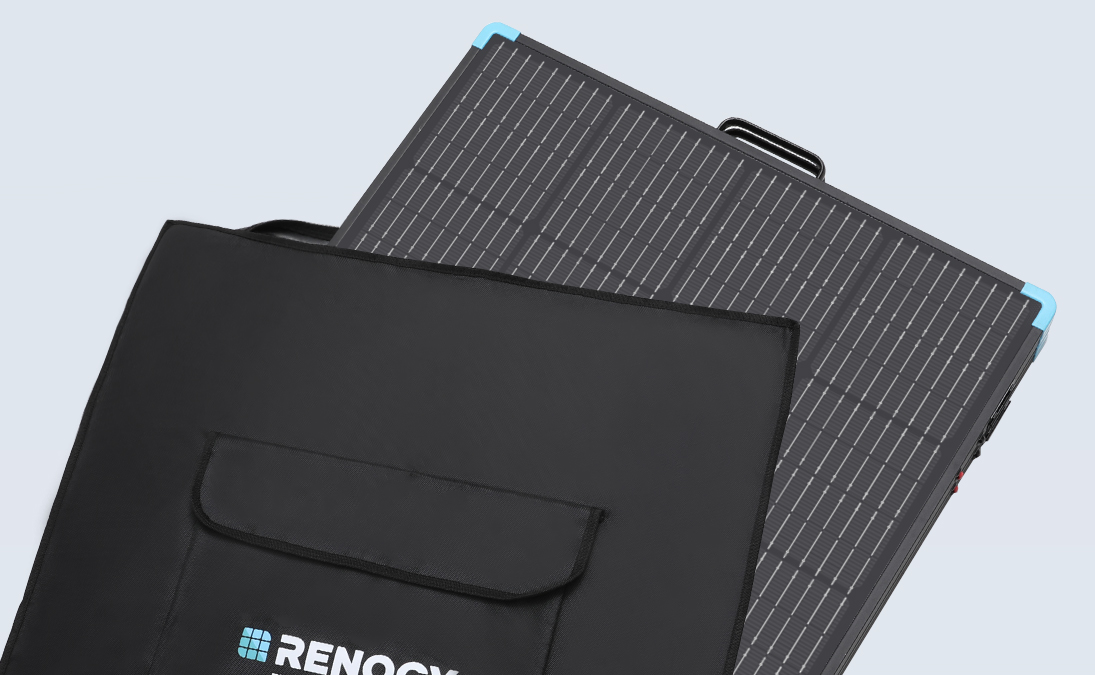
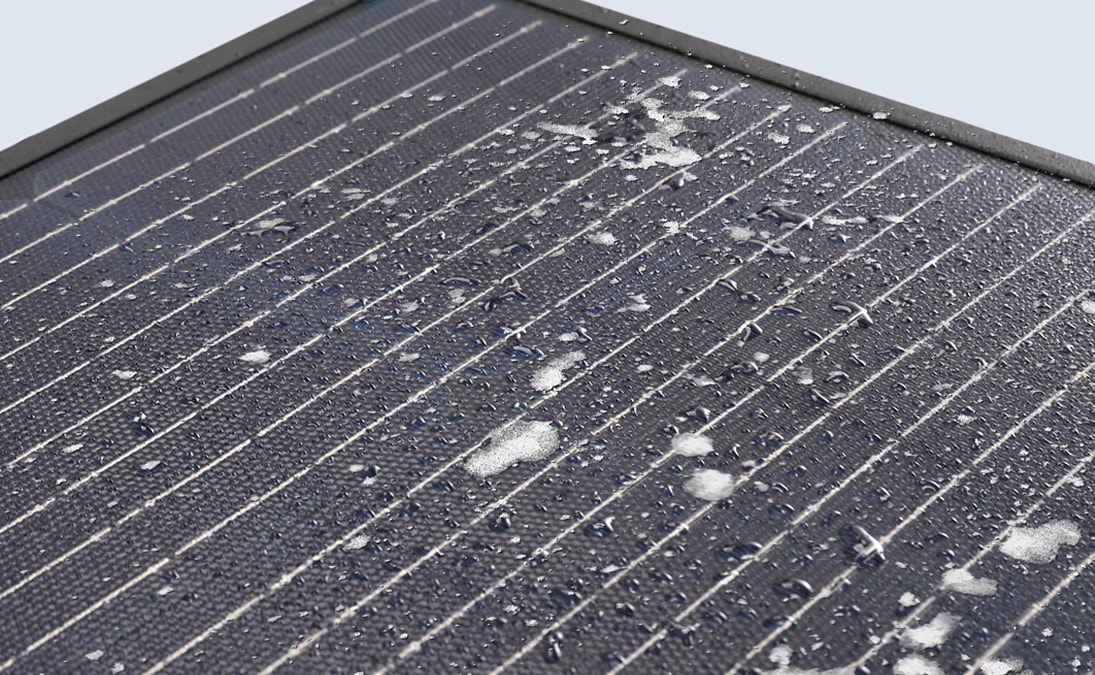
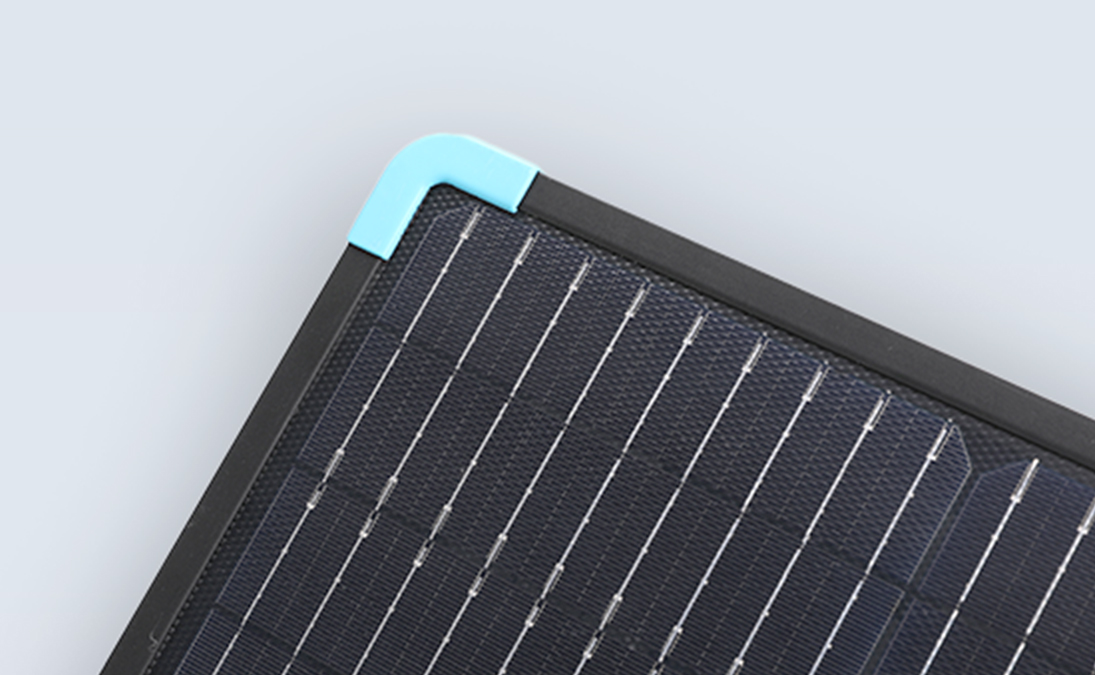
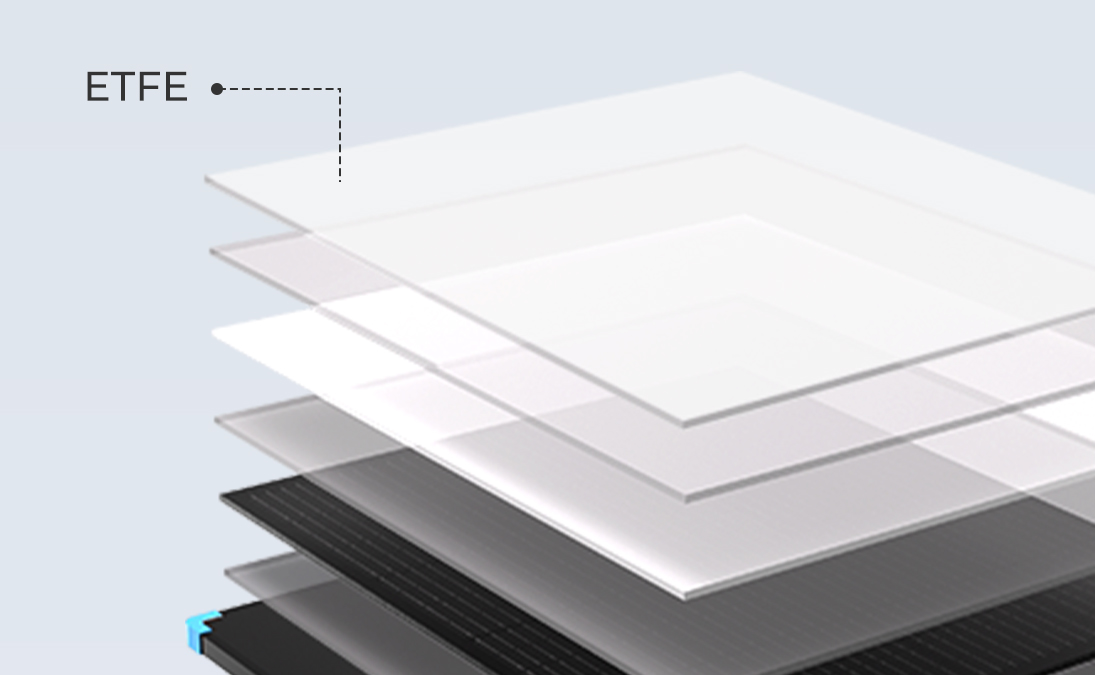




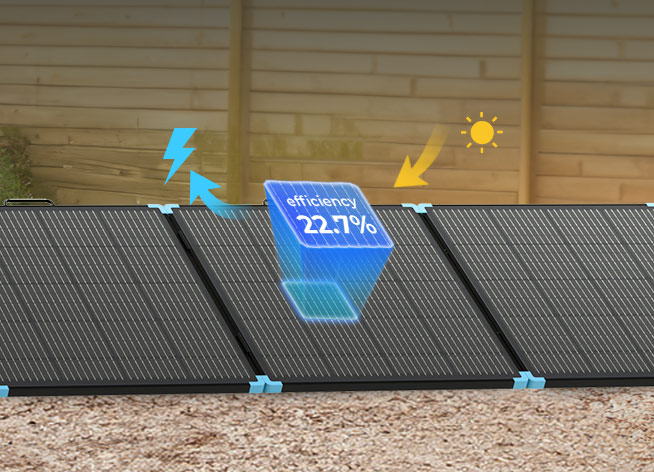
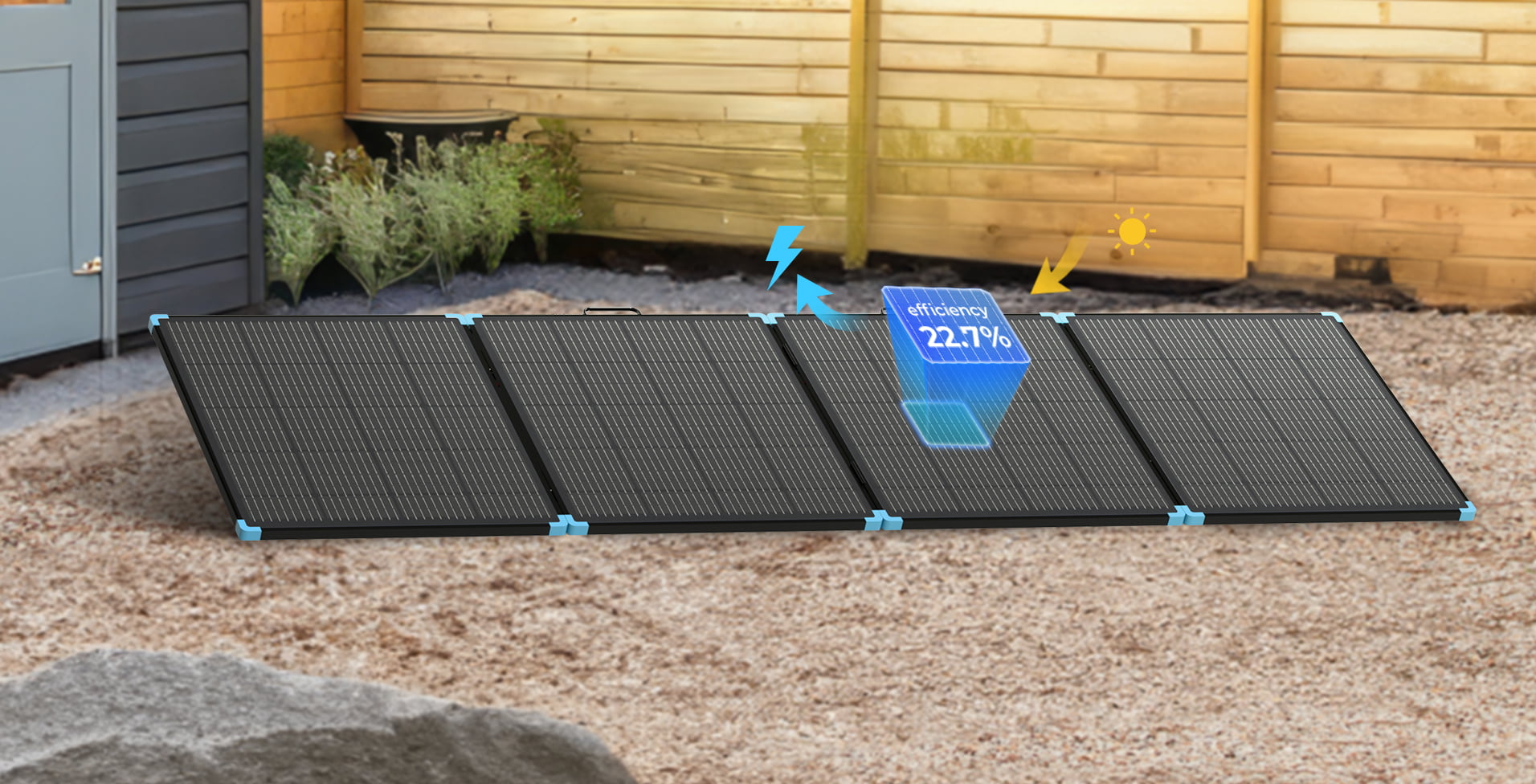
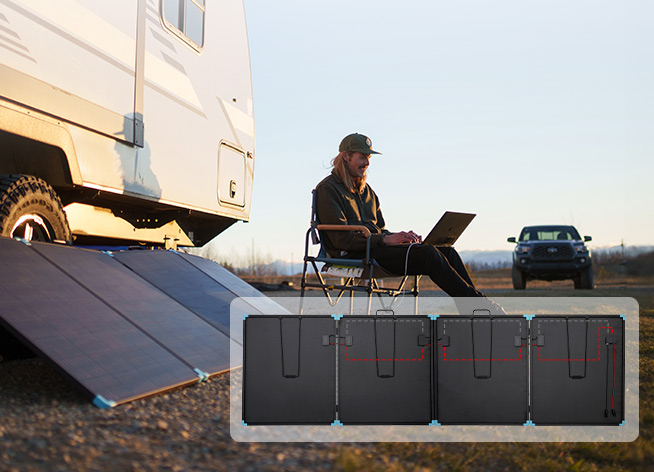
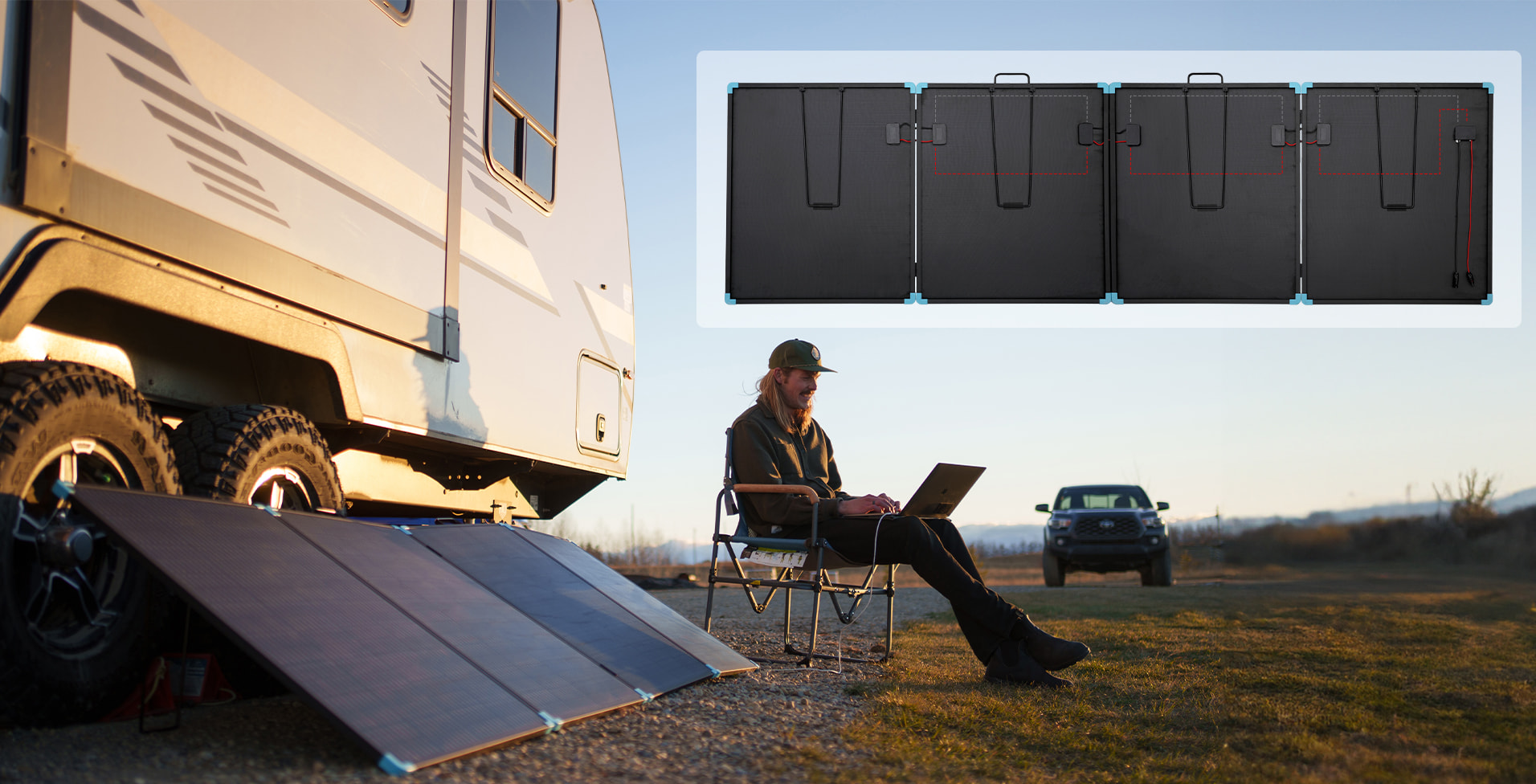


Package Includes
- If you have any questions regarding this product, please call us at 1 (909) 287-7111 or submit a ticket for troubleshooting assistance.
- More questions about your off-grid power system? Learn more from Renogy Learning Center!
|
400W Compact Mono Portable Solar Panel
1 x
|
|
Module Performance |
|
|---|---|
| Maximum System Voltage | 600 VDC UL |
| Max Power at STC | 400W |
| Open Circuit Voltage | 47.2V |
| Short Circuit Current | 11.0A |
| Maximum Series Fuse Rating | 15A |
| Warranty | |
| Model | |
| Operating Temperature | -40°F~185°F / -40℃~85℃ |
| Operating Humidity | 0% to 95% RH |
| Operating Altitude | Less than 5000m above sea level |
| Installation | Flush mount or place on a table |
| Dimensions | 2838*855*20 mm (111.8x33.7 x0.8 in) |
| Weight | 13.7kg (30.2 lbs) |
| Certification | CE, RoHS, TSCA |
| Warranty | 3 years warranty |
a.A solar panel has to be connected a charge controller to regulate current, and a battery to store the electrical power. You will need adapter kit cables to wire the solar panel(s) and charge controller, and tray cables connecting the charge controller to a deep-cycle battery.
On-grid simply means solar power equipment (array or solar panel) is connected to the electrical grid, while off-grid refers to systems that are not connected to the grid and therefore store the generated power for later use. Off-grid systems are not affected by grid blackouts.
Solar panel performance may be hindered for a number of reasons. Most commonly environmental conditions such as indirect sunlight, temperature rise, cloudy sky, and dirt and stain build up on the top glass will cause a reduced power output.
Solar panels can be connected in series or in parallel to meet your electrical circuit size and power demand. Connecting solar panels in series will have the effect of adding up their operating voltage output, while system current output will be the same as that for one panel. While, connecting solar panels in parallel will have a different effect; individual panels operating current output will add up to be the system output current, while system output voltage will be the same as the output voltage of one solar panel. To meet the optimum power output and system rating for your power system, you can use both parallel and series connections.
The best way to gauge how many solar panels you need, is to understand and define the power load needed from this system. Power is measured in Watts, and capacity is commonly measured in Watt-hours (multiplying power output in watts by the required number of hours of operation multiplied by a safety factor of 1.5-2). Therefore, it is wise to size your battery bank first based on the minimum required capacity, and accordingly decide how many panels or how much power input is needed.
The 12V/24V in product titles (ex. 150W 12V CIGS Solar panel) does not refer to the actual voltage (Voc or Vmp) of the solar panels, but rather to the voltage of the solar system or energy storage system to which the panel is best suited. The voltage of the solar panel must be higher than the solar system voltage.
It is normal for the adhesive backed release film to be partially peeling off d by curling stress, which will not affect the normal installation and use of the product.
A small color difference in the cell is a normal phenomenon. The color of CIGS cell depends on the thickness of its coating, and the extremely small difference in thickness will cause a difference in the color of the cell, but it will not affect the power generation work of the cell.


